I am getting back to my roots for this week’s blog post. When I started Married to Plants a few years ago, many of my posts were written to introduce readers (particularly in Southern California) to new plants that I have had success with and that they might enjoy growing as well. This post will introduce readers the Yellow Geiger Tree (Cordia lutea). I find it strange that Cordia lutea hasn’t been introduced into the nursery trade here in Southern California. Maybe this post will help.
Many readers will know the name “Geiger Tree” because of a very popular and beautiful landscape tree found throughout the tropics. That tree is Cordia sebestena and its small size and bright orange flowers can’t be missed. That tree has far too tropical of a requirement to be gown here. Another relative, and one native to Southern Texas and Northern Mexico, is the “White Geiger Tree” or Wild Olive. Hardy down to about 20 degrees Fahrenheit and extremely drought tolerant, I just don’t find the white flowers showy enough for my taste. All this leads me to the tree that is the subject of this post – Cordia lutea. The tree that falls right in-between the two. A drought-tolerant and cold-tolerant flowering tree with pretty yellow flowers.
Native to the Galápagos Islands, mainland Ecuador and Peru, Cordia lutea is a large shrub, that with continued effort can be trained as a small tree. I have found through 10 years of experience in growing this plant in my garden and trying to make it a single trunk tree, that the Yellow Geiger Tree just prefers to be a sprawling shrub. However, I am not giving up on the fight. Mine is like a cross right now—a short, sprawling, shrubby, single-trunk tree.
Cold-hardy to a Zone 9b, once established, Cordia lutea is a very fast grower and handles a hard pruning with ease. My tree was cut back pretty heavily last winter and you can see its free-branching habitat caused it to fill out nicely (my son used for scale). Another great feature of this plant is that it is a true evergreen and will only have leaf drop after a cold spell.
As you see above, Cordia lutea is best suited for open areas in your yard because of its spreading habit. It would also make for an excellent screen, as the plant is very dense in its growth.
Let’s talk about the best feature that this tree possesses, namely the seemingly never-ending blooming season. With peak blooming happening in summer and fall, with a mild winter, Cordia lutea will bloom all year. I have witnessed year-round blooming often in my garden. So if clusters of bright yellow flowers blooming throughout the year is your thing, you will love this plant.
A single flower only lasts a day, but these small, trumpet-shaped yellow flowers bloom in such large clusters that it really doesn’t matter.
The flowers of Cordia lutea are unscented and, oddly, don’t attract honey bees. I think it might be due to the fact that once the flowers open they are not very stable and fall off quite easily. A bee crawling on a flower would certainly force it to drop.
Did I mention Cordia lutea flowers profusely from summer through fall? The flower litter under my tree will help further drive this point home.
During peak blooming season, there is a never-ending supply of new flower buds on the tree. Also, you can not tell from the photo below, but the leaves of Cordia lutea are rough on top (almost like sandpaper) and covered with small hairs below.
As the plant ages and the gray and brown trunk gains some girth, the bark becomes furrowed.
The fruits of Cordia lutea are small white berries and house a single seed. The seed will self-sow in the garden. I have been able to share progeny from my garden by digging up the seedings under my plant.
Cordia lutea is an unbelievably pest- and disease-free plant. In 10 years of growing it, I have never had a single issue to write about. In fact, I have never noticed anything eating any of the leaves either. There are few plants in my garden that I can say this about. Cordia lutea is also very drought tolerant once it has established itself. While I have not tested this, a friend I gave seedings to that lives in a much hotter and drier area gets by with once-a-week waterings in summer and with his irrigation shut off in winter.
If you can learn to get past the sprawling nature of Cordia lutea, you will find few flowering shrubs/trees that can offer what this plant does.

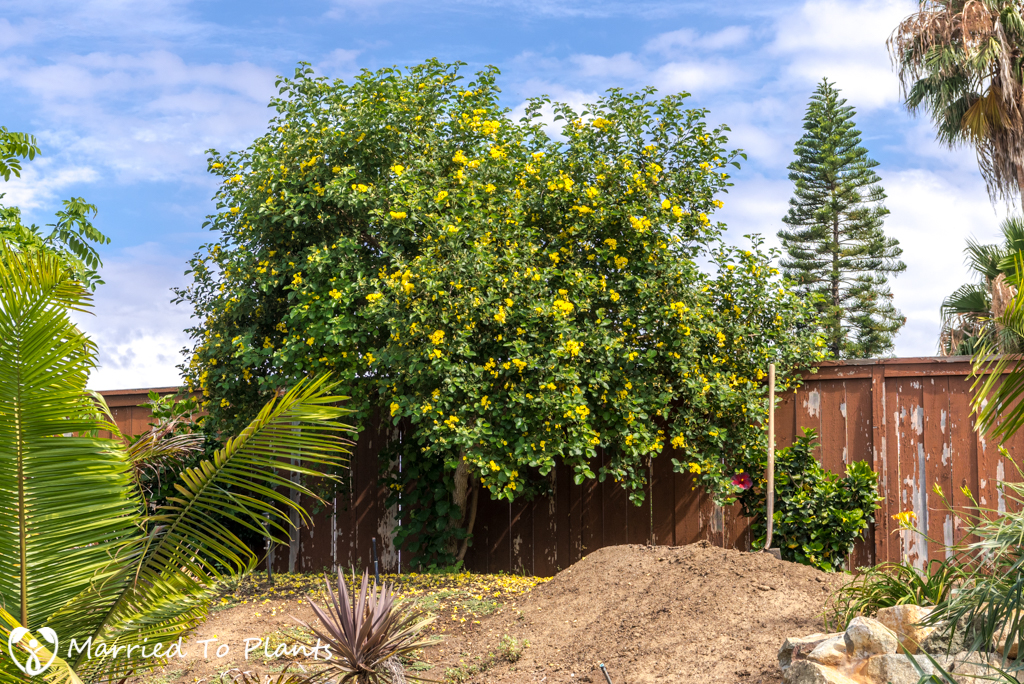
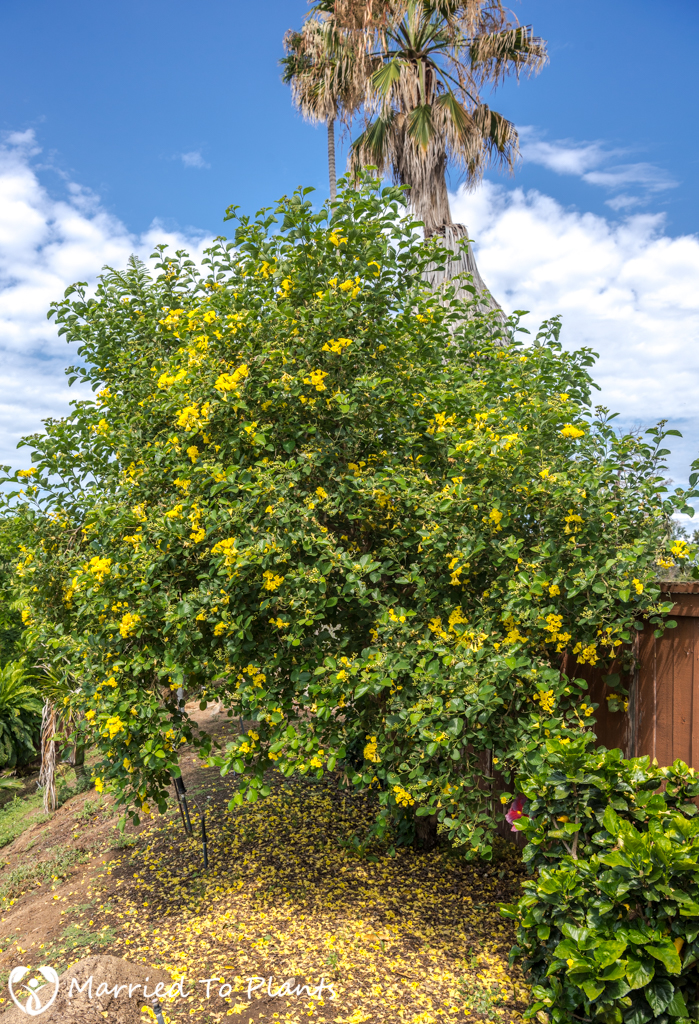
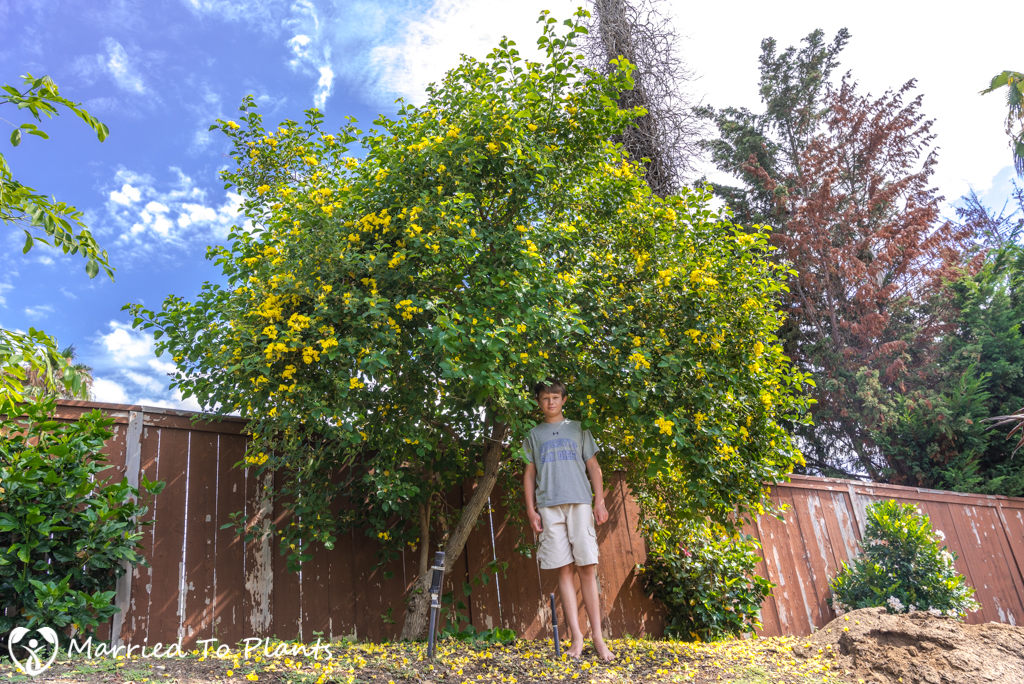
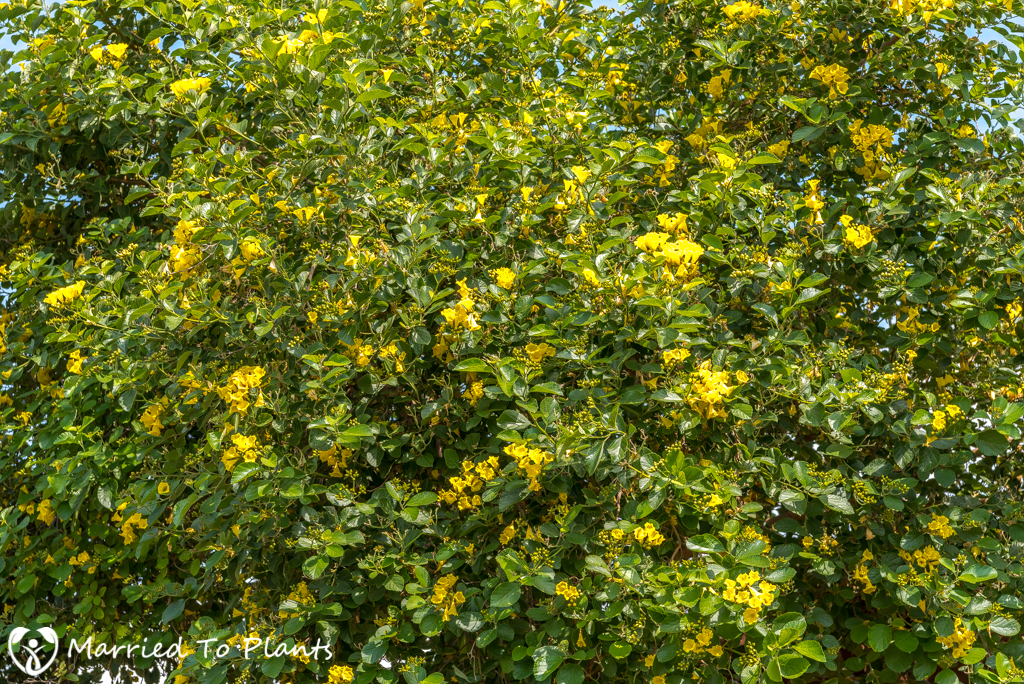
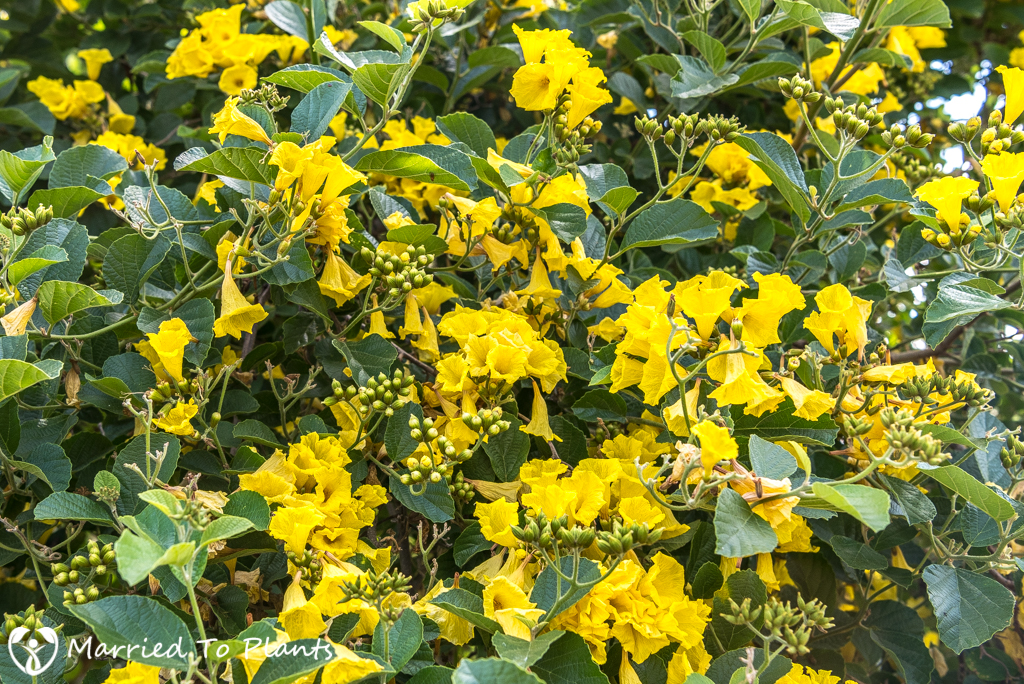
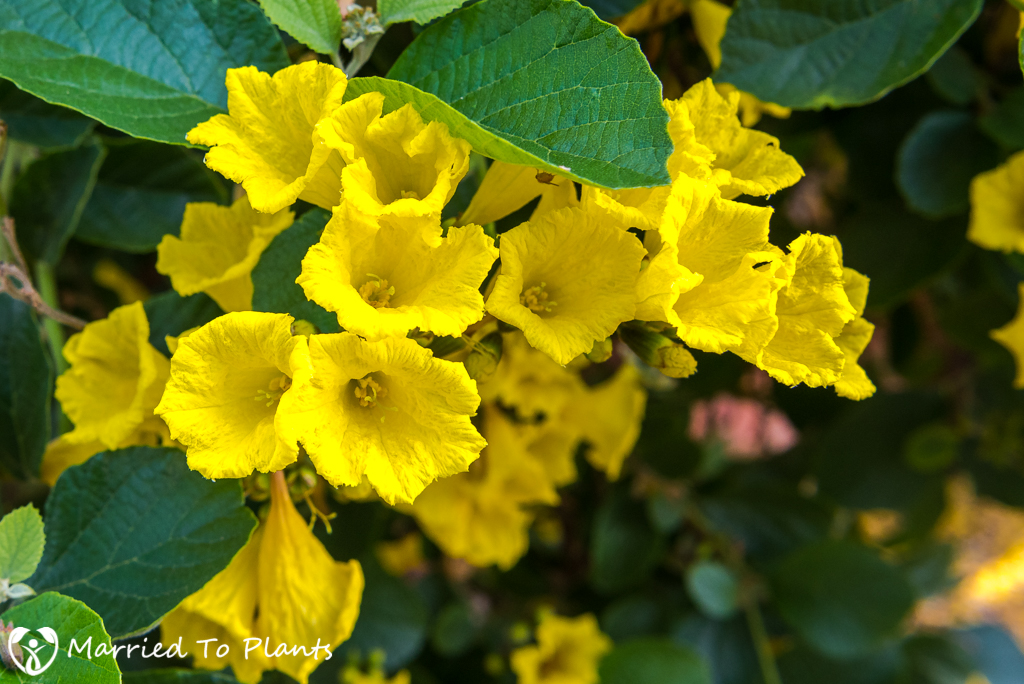
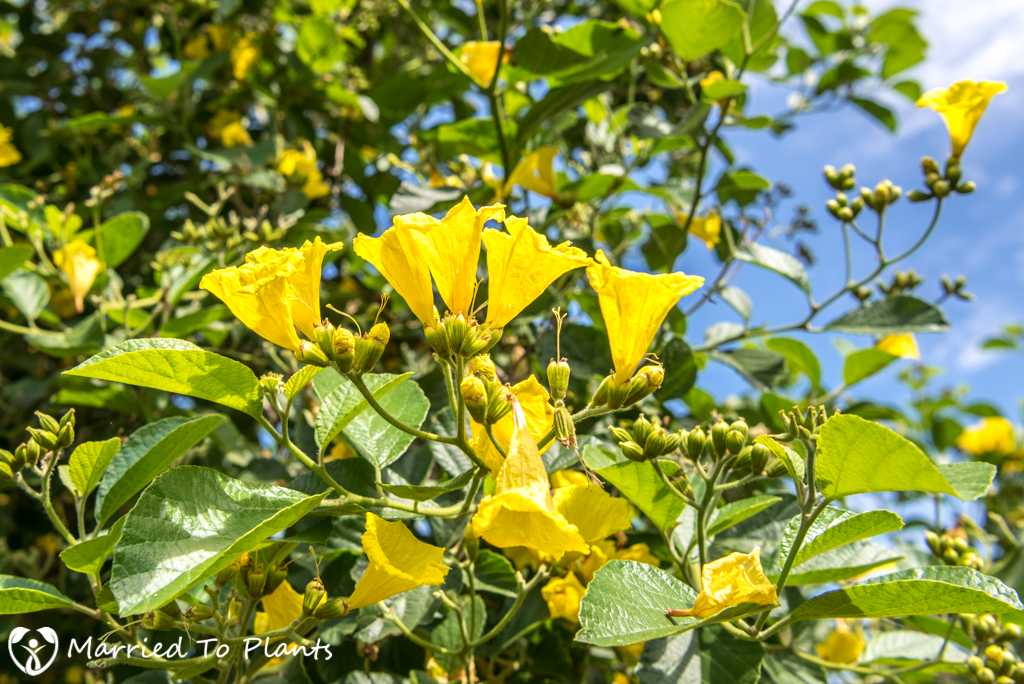
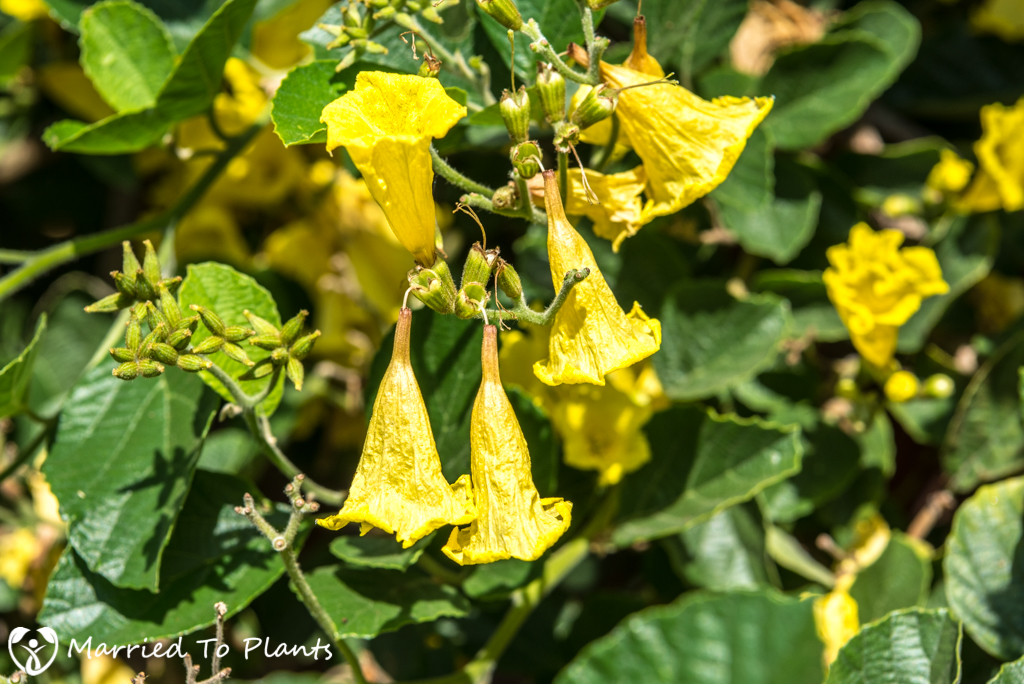
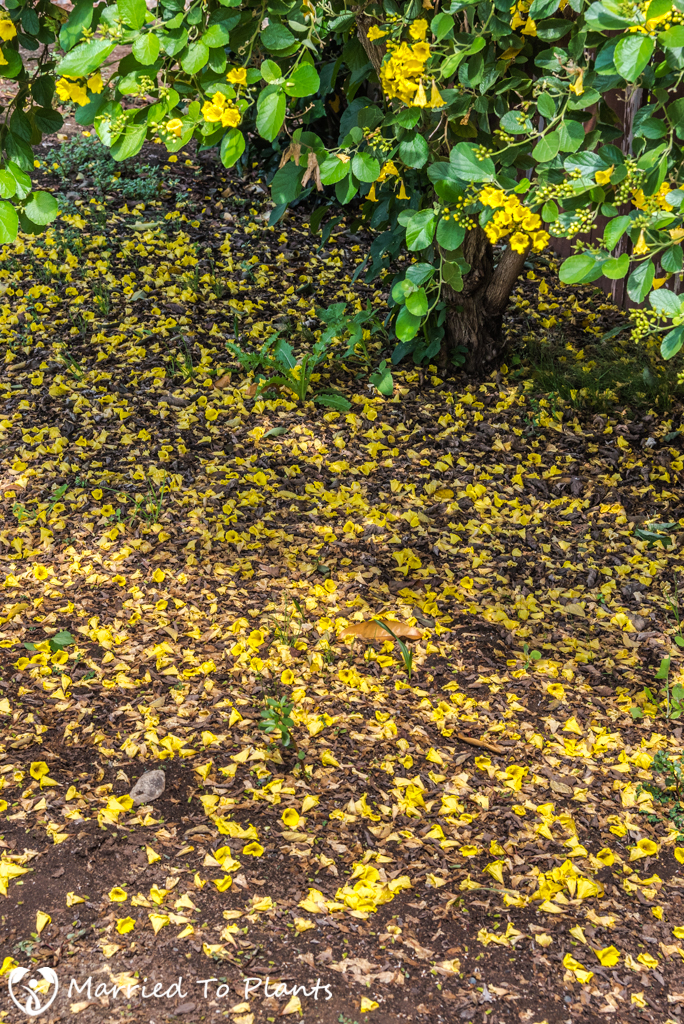
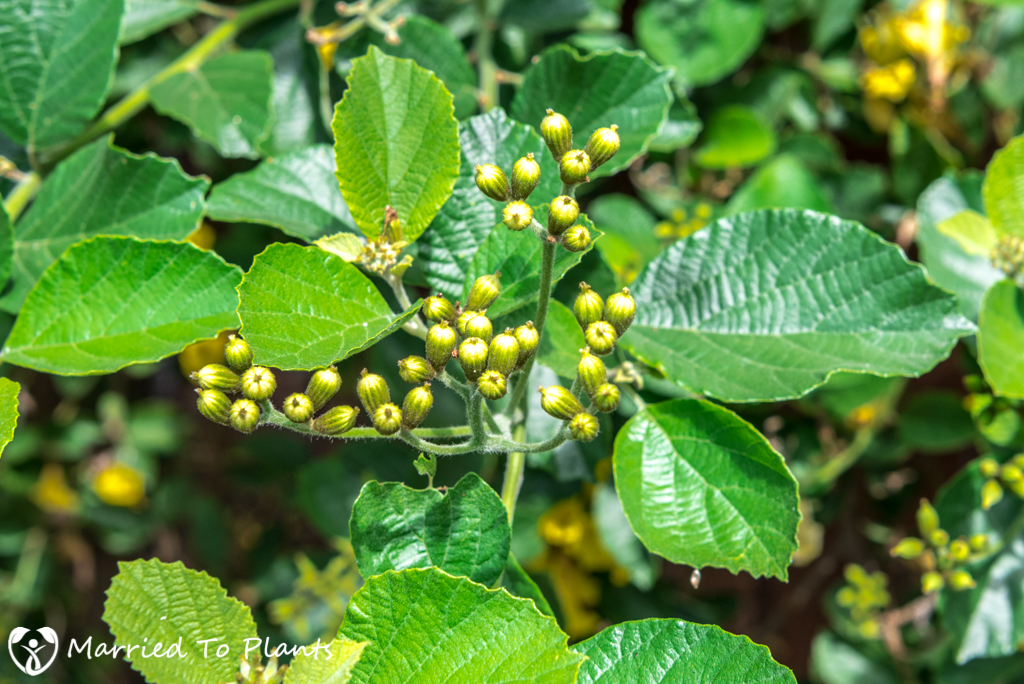
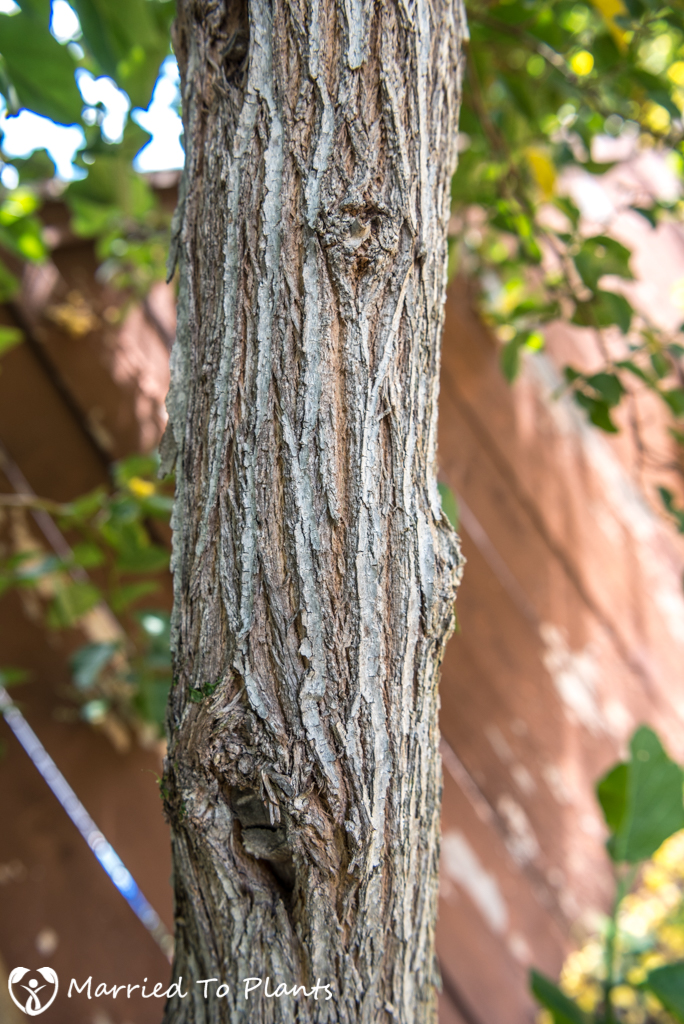
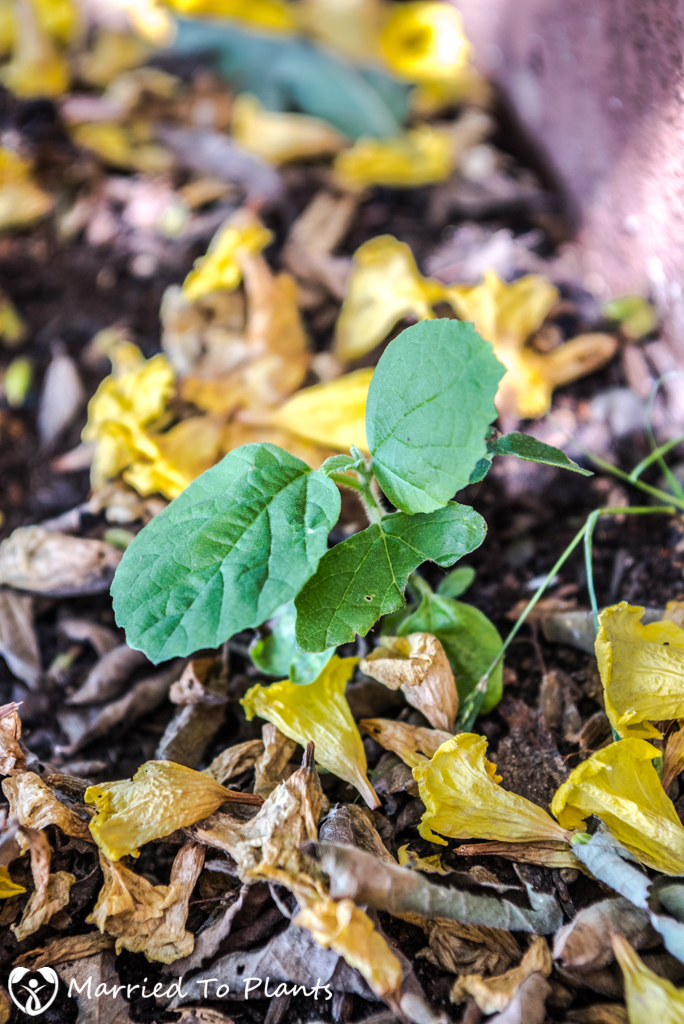
OK. I have to ask… wasn’t this post briefly pertaining to the “Golden Shower Tree”? or am I losing it further in my old age… haha
What do you mean Bill?
Didn’t this post start out all about your “Golden Shower Tree”? Did you change it?
Not sure why it would. Maybe you are talking about the Facebook post I added showing a bumble bee on my Cassia fistula?
Pretty shrub.
“Reads” in the landscape like Tecoma stans–perhaps that plant simply won out in the local nursery biz?
Yes, very similar plant.
Local nursery is having their semi-annual sale & I picked up a 3 gal. yellow geiger for $6. Reminds me of a tabebuia. Wish me luck.
Could you tell me name and location of this nursery? That is, if it is in So. Cal.
Is it possible to propagate this tree from a cutting?
Sorry, I do not know.
Hello. Really like this plant and would like to get one. Any suggestions? Also, thank you for recommending plants that are not yet common in So. Cal. I am a landscaper 8n Los Angeles and always on the lookout for different plants. This one sounds amazing – ever blooming, pest free, drought tolerant, what more could you ask for? Yes, I love the Tecomas but this has anice, spreading shape for large areas.,
Hello,
Do you have any experience with this plant and windy situations? Do the flowers fall off before opening? I like the profuse blooms but worry they would not even open before being blown off by the wind.
Flowers only last a day, end of day wind will strip them.
yI would like to get one of these plants but no nurseries near me seem to carry them. I would go to a nursery in southern CA to get one.
I’m in South Florida and have this plant in my circular drive planter for 2 years and it hasn’t moved (no flowers or growth). Does it need regular fertilizing?
No, I hardly fertilize. Strong grower.